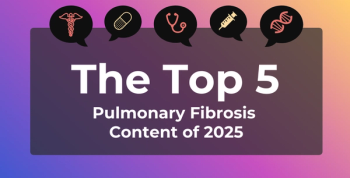
Health Care Professionals’ Implicit Bias May Affect Treatment Referrals for Smokers With COPD
Researchers found that health care professionals who refer patients with chronic obstructive pulmonary disease (COPD) to pulmonary rehabilitation have a negative bias toward smoking and a positive bias toward exercising, which could affect how they present rehabilitation options.
Researchers identified implicit bias within health care professionals (HCPs) who refer individuals living with
More specifically, researchers found that HCPs demonstrated negative bias toward smoking and positive bias toward exercising. These results were determined using the Implicit Association Test (IAT). Administered between June 2021 and April 2022, the researchers explained that the test measured participants’ response times when categorizing words related to smoking or exercise to matching and unmatching concepts or evaluations of concepts.
Eligible criteria for participants were that they practiced health care in the United Kingdom, referred individuals with COPD to PR, and provided informed consent to participate. Of 124 HCPs screened, 104 (83.9%) consented to the test, demographic data were available for 88 of them (84.6%), and IAT data were available for 69 participants (66.35%). Also, 68.2% of participants were female, and 28.4% were aged 45 to 54 years.
According to the researchers, the IAT measures implicit associations between concepts and evaluations of those concepts. Ultimately, it calculates the difference in association between 2 target concepts. In this case, the researchers explained that they chose smoking and exercising because HCPs have previously identified these as positive and negative influencers of individuals with COPD engaging in PR.
The researchers added that their IAT contained 5 test blocks. Blocks 1, 2, and 4 were used as training blocks to allow participants to practice categorizing; blocks 1 and 4 presented participants with a concept categorization task, while block 2 presented them with an evaluation of a concept categorization task. On the other hand, blocks 3 and 5 were experimental blocks that had participants complete congruent and incongruent categorizations.
For instance, in the congruent categorization block, participants were asked to categorize a word such as “craving” to either the concept of exercise with the evaluation of pleasant or the concept of smoking with the evaluation of unpleasant. A task in the incongruent categorization block would ask participants to categorize a word such as “run” to either smoking and pleasant or exercise and unpleasant.
Researchers found that the primary outcome of the IAT was the standardized mean difference in response times between the matching and unmatching categorizations (D4-score). The D4-scoresrangedfrom 0.99 to 2.64, indicating implicit favoring of matchingcategorization (mean [SD] of the D-score, 1.69 [0.38]; 95% CI, 1.60-1.78; P < .05); this was significantly different from zero, with a large effect size (r = 0.61).
These results showed that HCPs demonstrate implicit bias as they associate exercise with pleasant attributes and smoking with unpleasant attributes. This suggests a negative bias toward smoking and a positive bias toward exercising.
Depending on a patient’s habits, the authors explained that this may affect how HCPs discuss PR with individuals living with COPD.
“Knowing that HCPs have implicit bias towards the characteristics smoking and exercising, it is likely that when they are presented with patients expressing these health behaviors, they change their behavior accordingly,” the authors wrote. “This means that when implementing shared decision-making into PR conversations with individuals with COPD, they may not have the same standardized, informed, and value-based discussions with all individuals.”
The researchers explored possible solutions after finding proof of implicit bias within their study results.
“There may be value in giving HCPs instructions to implement intentional strategies to override or suppress bias, exposure to an exemplar who contradicts the stereotype, tasks which minimize the barriers between themselves and an outgroup, tasks to increase counter-stereotype associations, and tasks to induce emotion,” the authors wrote.
Although their findings are the first to indicate that HCPs have an implicit bias towards specific characteristics within patients with COPD, the researchers said that limitations exist within their study. One limitation is that the IAT does not definitively diagnose implicit bias, instead indicating its potential presence. Their results are also not generalizable because the sample only contained predominately female HCPs from the United Kingdom.
Despite these limitations, the researchers wrote that the results demonstrated the presence of implicit bias among HCPs and encouraged them to discover ways to overcome it.
“Due to the correlation between beliefs and behavior, this provides a rationale for the inclusion of components targeting HCP communication in our shared decision-making intervention to enable HCPs to fully and impartially support individuals’ decision-making for PR,” the authors concluded.
Reference
Barradell AC, Robertson N, Houchen-Wolloff L, Singh SJ. Exploring the presence of implicit bias amongst healthcare professionals who refer individuals living with COPD to pulmonary rehabilitation with a specific focus upon smoking and exercise. Int J Chron Obstruct Pulmon Dis. 2023;18:1287-1299. doi:10.2147/COPD.S389379
Newsletter
Stay ahead of policy, cost, and value—subscribe to AJMC for expert insights at the intersection of clinical care and health economics.







































